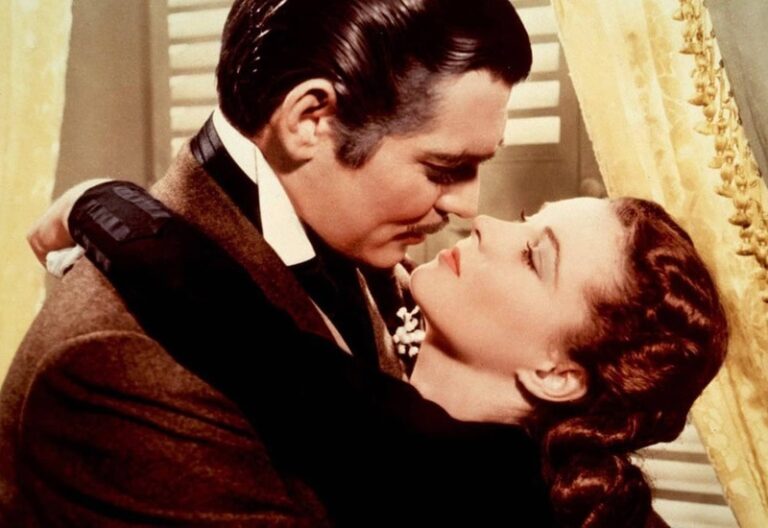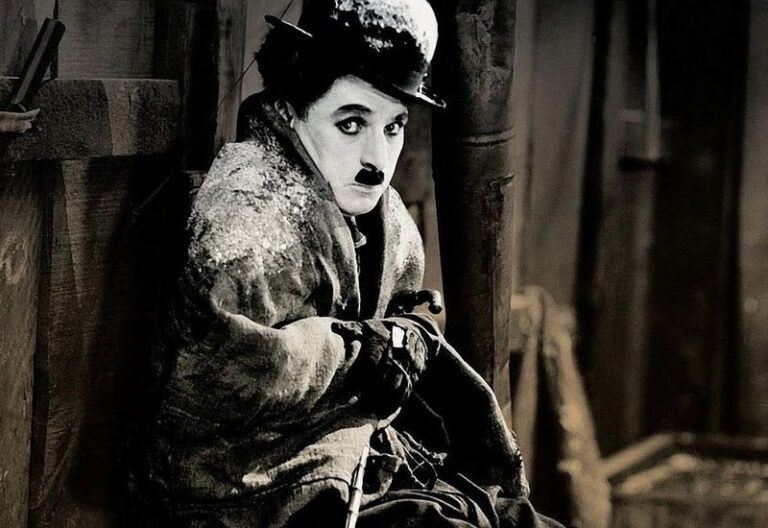a brief history of color in film
The history of color in film is a story of technological innovation, artistic exploration, and the gradual evolution of cinema. While modern audiences are accustomed to vibrant color in films, this evolution was a long process marked by experiments and technical breakthroughs.
Published by: CinemaWaves Team | Filed Under: Film Blog
Hand-Painting and Tinting: Early Experiments
Before the advent of color film, black-and-white cinema dominated the early years. However, the desire to add color to film started almost as soon as cinema was invented. In the late 19th century, filmmakers used various rudimentary methods to add color to black-and-white footage. One of the earliest techniques was hand-painting individual film frames. Artists would meticulously color each frame by hand, but this process was extremely time-consuming and impractical for long films. One of the best examples today of the hand-painting method is “Annabelle Serpentine Dance” (1895), directed by William K.L. Dickson.
Another early technique was tinting, where entire scenes or sequences were tinted with a single color to convey mood or time of day. For example, blue might represent night, while red could be used to indicate action or danger. This method, though simpler than hand-painting, still only allowed for a limited and abstract use of color.
Kinemacolor: The First Commercial Color Process
The first significant breakthrough in color film came with Kinemacolor, developed in 1908 by British cinematographers George Albert Smith and Charles Urban. Kinemacolor was the first commercially viable color film process, using a two-color system (red and green) to create the illusion of full color. It worked by projecting alternating red and green frames, and while the result was far from perfect, lacking blue tones and suffering from noticeable flickering, it marked an important step forward.
Kinemacolor was used to produce over 100 films, including newsreels, documentaries, and fictional films. “A Visit to the Seaside” (1908) was one of the earliest films shot using Kinemacolor. However, the process was limited in its color palette and required special projectors, making it expensive to implement in theaters.
Prizma Color System: An Early Innovation
Another significant development in the history of color in film came with the Prizma color system, invented in 1913 by William Van Doren Kelley. Prizma was a two-color process that used red and green filters, similar to Kinemacolor, but it aimed to improve by simplifying.
Unlike Kinemacolor, Prizma did not require specialized projectors, which made it more accessible to filmmakers. The Prizma system was initially used for short films, but later it began to incorporate feature films. However, much like Kinemacolor, Prizma’s limitations in capturing a full range of colors, along with the emergence of more advanced technologies like Technicolor, eventually led to its decline.
Technicolor: Revolutionizing Color in Film
The most significant advancement in the history of color film came with the development of Technicolor in 1916, revolutionizing cinema. Technicolor went through several stages of development, the most famous being its three-color process, which became synonymous with vibrant, saturated colors in Hollywood films. The first version of Technicolor, introduced in 1916, was a two-color system similar to Kinemacolor, but it improved on the color quality and stability. Films like “The Toll of the Sea” (1922), demonstrated the early potential of Technicolor, however, the limited color range still posed challenges.
The breakthrough came in 1932 with the introduction of the three-strip Technicolor process, which used three separate film strips to capture red, green, and blue light. This allowed for a full range of colors and produced strikingly vivid images. The first film to use this new process was “Flowers and Trees” (1932), a Disney animated short that won the first Academy Award for Best Animated Short Film. The three-strip process truly gained prominence with live-action films. One of the most famous early Technicolor films is “The Wizard of Oz” (1939), which used the technology to dramatic effect.
The contrast between the black-and-white world of Kansas and the vibrant, colorful land of Oz was a stunning use of the medium. Technicolor dominated the Golden Age of Hollywood during the 1930s, 1940s, and 1950s, becoming renowned for its rich, saturated colors
Cinecolor and Eastmancolor:
Competing Technologies
While Technicolor was the leader in color film, it was not the only process in use. Cinecolor, a two-color process similar to early Technicolor, was used primarily for low-budget productions, cartoons, and Westerns. It offered a cheaper alternative but lacked the full range of colors seen in Technicolor films. Despite its limitations, Cinecolor was popular with smaller studios because it required simpler equipment and was less costly to implement. Its distinct, somewhat muted color palette became a recognizable feature of many serials and B-movies of the time, giving them a unique visual identity.
The next major step came in the 1950s with the introduction of Eastmancolor, developed by Kodak. Unlike Technicolor’s complex three-strip system, Eastmancolor used a single-strip color negative, making it more accessible and easier to use for filmmakers. The arrival of Eastmancolor democratized color filmmaking, as it could be used with standard cameras and offered greater flexibility.
Eastmancolor quickly gained popularity, and by the late 1950s, it began to replace Technicolor as the dominant color film process. The single-strip format was cheaper, more practical, and produced high-quality color images, leading to its widespread adoption across Hollywood and international cinema. Films like “Rebel Without a Cause” (1955) and “2001: A Space Odyssey” (1968) demonstrated the potential of Eastmancolor to create vibrant, realistic imagery.
Well, what was the first color film then?
Determining the first color film involves considering various milestones. “Annabelle Serpentine Dance” (1895) introduced hand-tinted color, but the first film to be shot and projected using a natural color process was “A Visit to the Seaside” (1908), which used the Kinemacolor system. This short documentary applied a two-color process (red and green), marking the first commercial use of color, although it was still incomplete in terms of the color spectrum.
However, a more notable development came with “Becky Sharp” (1935) that became the first full-color feature using Technicolor’s revolutionary three-strip process, which captured a broader spectrum of red, green, and blue. All these early milestones laid the foundation for the future of color in cinema and can equally be named as “the first color film.”
Color Film in the Modern and
Digital Era
By the 1960s, color had become the norm in mainstream cinema, with black-and-white films largely relegated to art films or special projects. The transition to color was driven not only by advancements in technology but also by audience preferences for more visually immersive experiences. As color became more affordable and practical, filmmakers embraced its potential to heighten mood, atmosphere, and symbolism. Yet, despite this widespread shift, black-and-white cinema remained a choice for directors seeking to evoke a certain aesthetic or narrative quality.
In the digital age, technological advances have made color grading and digital color manipulation essential tools in filmmaking. Directors and cinematographers now have unprecedented control over the color palette of their films, enabling them to fine-tune visual styles with precision. The use of color can now be as subtle as changing the tone of a single scene or as bold as saturating an entire film with a particular hue.
Color choices are often employed to reflect mood, theme, or character progression, creating a deeper visual connection with the narrative. For instance, “The Matrix” (1999) used a greenish tint to differentiate the artificial world of the Matrix from the real world, while “Mad Max: Fury Road” (2015) used exaggerated contrasts and vibrant hues to enhance its high-octane, post-apocalyptic setting.
The evolution of color in film, from early hand-painted frames to the vibrant hues of Technicolor and modern digital color grading, has dramatically shaped the art of cinema. Today, color is not just an aesthetic choice but an essential part of how stories are told and perceived on the big screen.
Refer to the main page for more educational insights on filmmaking and cinema history.
Technicolor’s origins trace back to the 1915 when Herbert Kalmus, Daniel Frost Comstock, and W. Burton Wescott founded the Technicolor Motion Picture Corporation. The …
Cinematography is the art and craft of capturing visual images for film or digital media. It involves the use of cameras, lighting, composition, and movement to tell…
In the early 20th century, a cinematic revolution was brewing in the Soviet Union. A group of visionary filmmakers, collectively known as the Soviet Montage School, gathered…
Cinematography is the art and craft of capturing visual images for film or digital media. It involves the use of cameras, lighting, composition, and movement to tell…
Silent films, originating in the late 19th century, represent the foundation of modern cinema. Characterized by their lack of synchronized sound, these films relied on visual…
Animation is an ever-evolving art form that has enchanted audiences for more than a century. From the earliest experiments in motion pictures to the cutting-edge CGI of…






